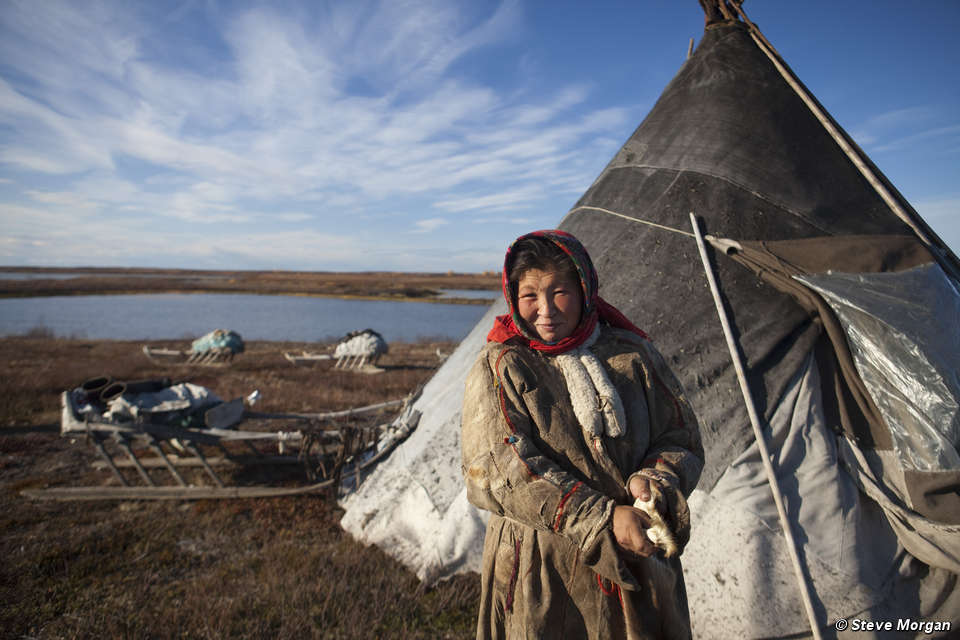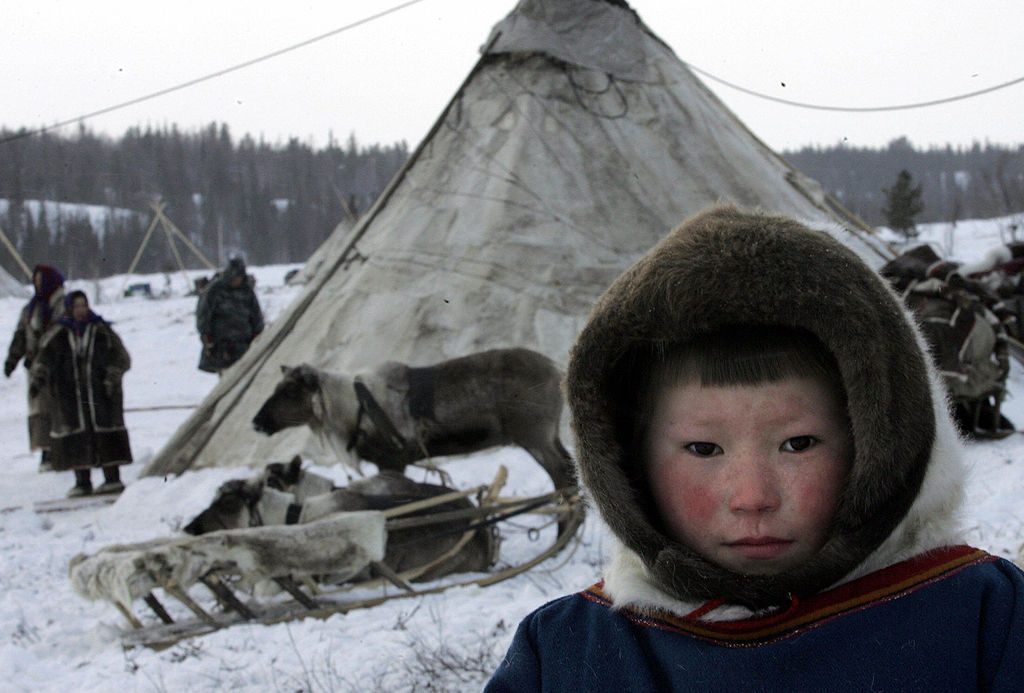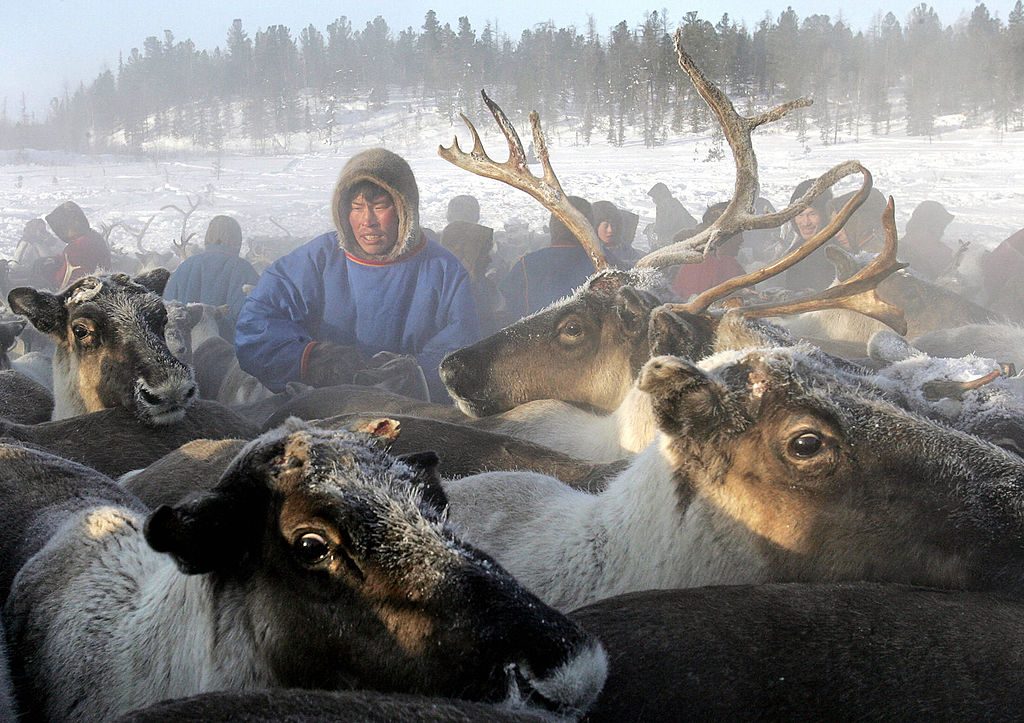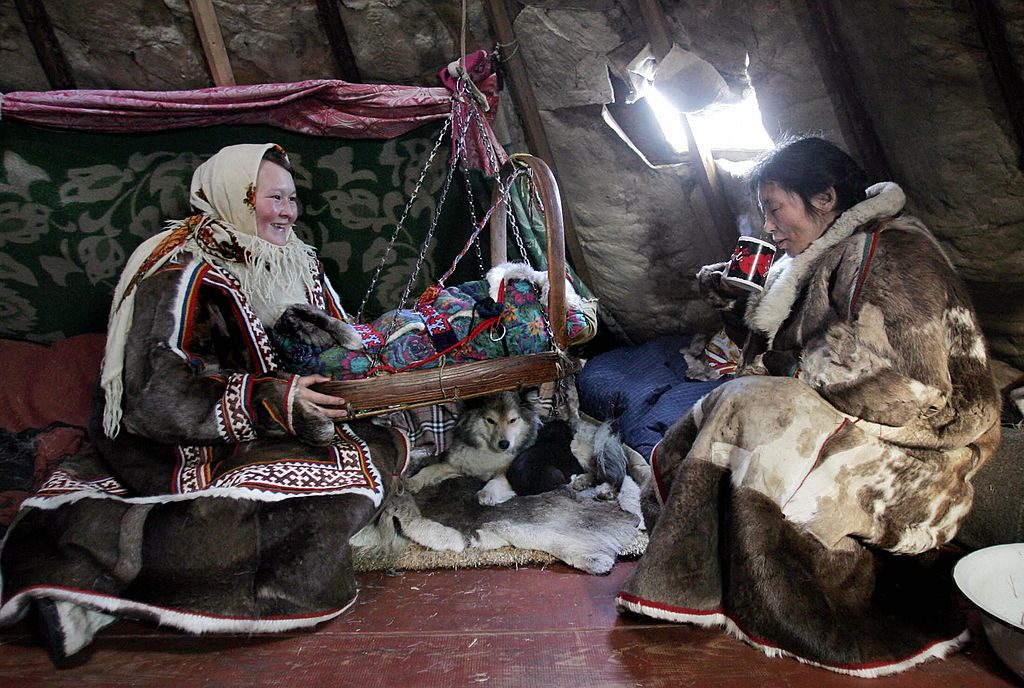
PHOTO: Survival International
Archaeologists from Canada have turned to a native people group in Siberia to help them solve the mystery of a recent archaeological find. At the site of Ust-Polui in northwestern Siberia, reindeer antler fragments with interesting markings were uncovered. They’re almost 2,000 years old, dating all the way back to the time of the Roman Empire. If the Canadian archaeologists’ theory as to their original use is correct, then this new discovery has far-reaching implications for our understanding of ancient Siberian history.
They believe that these reindeer antlers used to belong to a harness crafted by ancient reindeer herders. In order to test their theory, they’re going to the experts.
“We’re interested in tracing out the long-term history of reindeer herding or reindeer keeping in the Siberian Arctic,” Robert Losey, archaeologist with the University of Alberta explained.
They’re heading to the Yamal Peninsula near the site of Ust-Polui, where an indigenous group of reindeer herders called the Nenets live.

PHOTO: rcinet.ca
“Our first step has been to laser scan, 3D scan the archaeological objects to produce digital models from them, and then we take these digital models, print them here in Canada in plastic and then to try to replicate those objects in actual reindeer antler,” Losey said.
They’re then going to bring those replicas to the Nenets for their expert advice.
“What we’re trying to do is… [ask] reindeer herders to try out ancient reindeer harnesses on their contemporary reindeer to see how they work, would they be applicable in the past and the present?” fellow project lead Tatiana Nomokonova said. “We’re hoping to understand how the people interacted with animals in the past as well. So we’re not only looking at reindeer harness pieces but also at reindeer bones at several archaeological sites to try to understand which animals they had in terms of age and sex. When did they hunt them or had them? Were they domestic or wild reindeer? How far it goes back in time?”
According to the pair, there are no better people to answer these questions than the Nenets.
Life As It Was, Thousands of Years Ago

PHOTO: rcinet.ca
The Nenets, also known as Samoyeds, are indigenous to northern arctic Russia, and they make their living by herding reindeer.
“It’s really unknown though when reindeer keeping first began, when people first started taming and breeding reindeer,” Losey said. The current view is that it began only a few hundred years ago, in the 18th century. If these reindeer antlers they found really are part of an ancient harness, then this discovery shatters that belief.
That’s part of what they’re seeking to answer by working with the Nenets. “The question is really were people harnessing and working with reindeer 2,000 or 3,000 years ago in the Arctic or are these objects something else entirely.”
Throughout their history, the Nenets have used reindeer as draft animals and as sources of food. They live in yurts, and have a clan-based culture. Their entire world is based around their reindeer herds. Their belief system is shamanistic, and stresses respect for the world they live in and its natural resources, especially the reindeer.

PHOTO: rcinet.ca
They also breed their own dogs, Samoyeds, which they’ve been using for thousands of years to help pull sleds and herd reindeer.
The Nenets are some of the world’s leading experts on reindeer, reindeer breeding and domestication, and reindeer herding. Our pair of archaeologists wants to learn all they can from them in the hopes of understanding just how far back large-scale Arctic reindeer herding goes. They’ll be introduced to the people group through some Russian colleagues from the Arctic Center in Salekhard, who’ve been working with the Nenets people for a long time.
They’re expecting that this project is going to take a long time, but the Nenets don’t mind. They’re happy to help and to host the archaeologists and show them their way of life.
“We’re going to live in their mobile houses, sharing everything with the family. This means living inside the big tent, so the conditions will be quite cold,” Nomokonova said. “We’ll also have to bring a lot of food with us and gas, and make sure that we contribute our portion of supplies to the people who are hosting us.”

PHOTO: rcinet.ca
Nomokonova is really excited to live and work with the Nenets. She says they’re unlike any other herding culture that she’s ever studied. They have a unique relationship with their animals. Unlike most herding cultures who move their flocks around themselves, the Nenets work with their reindeer, following their migrations from south to north.
“It’s essentially the reindeer that moves the people,” she explained, not that people that move the reindeer. You can’t just tame a reindeer and keep it in one place, it keeps going and the people have to follow this animal, unlike horses or cattle or any other animals that people domesticated.”
This collaboration is an important step for archaeologists everywhere. As we move into the modern era and farther and farther away from early archaeological practices, scientists are, more and more, asking indigenous peoples to help them interpret the artifacts they find. After all, the artifacts and sites we find truly belong to them. They are the ones that know this history best.
“It’s a way to take the archaeology back to those communities to get indigenous perspectives on archaeological objects and to just to tell a more accurate and a more compelling story about the history of reindeer herding in this region.” – Robert Losey.

